NVIDIA Quadro RTX 6000 3DMark Suite Testing
Here we will run the Quadro RTX 6000 through graphics-related benchmarks.
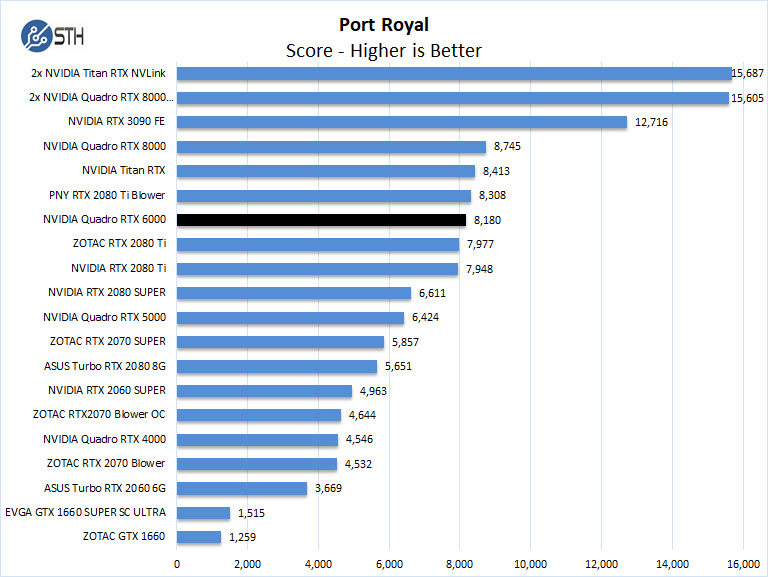
Here are the 3DMark suite results. We will discuss them after the charts.
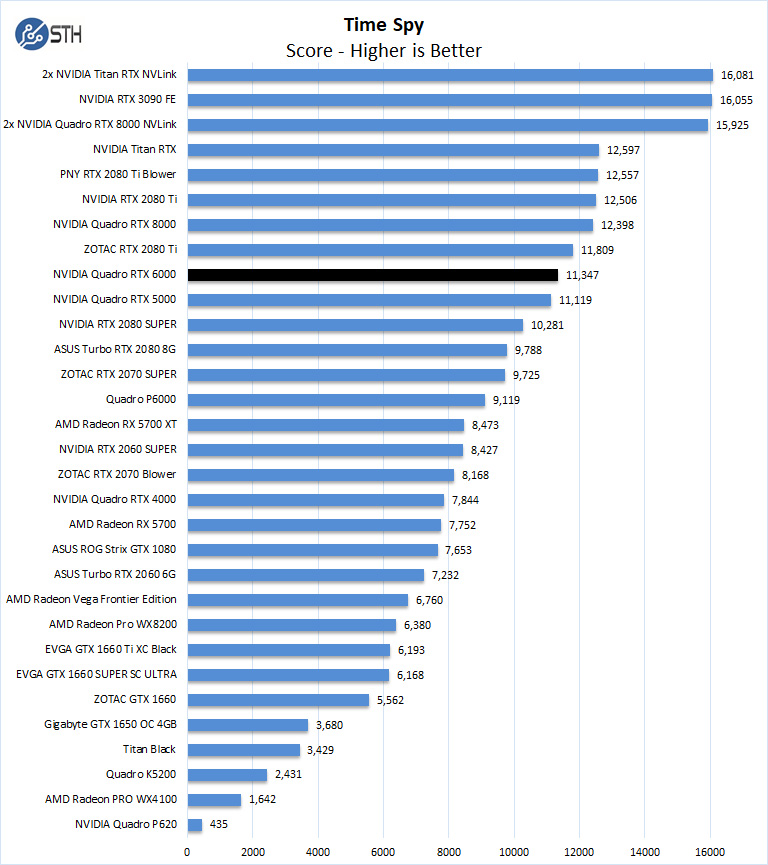
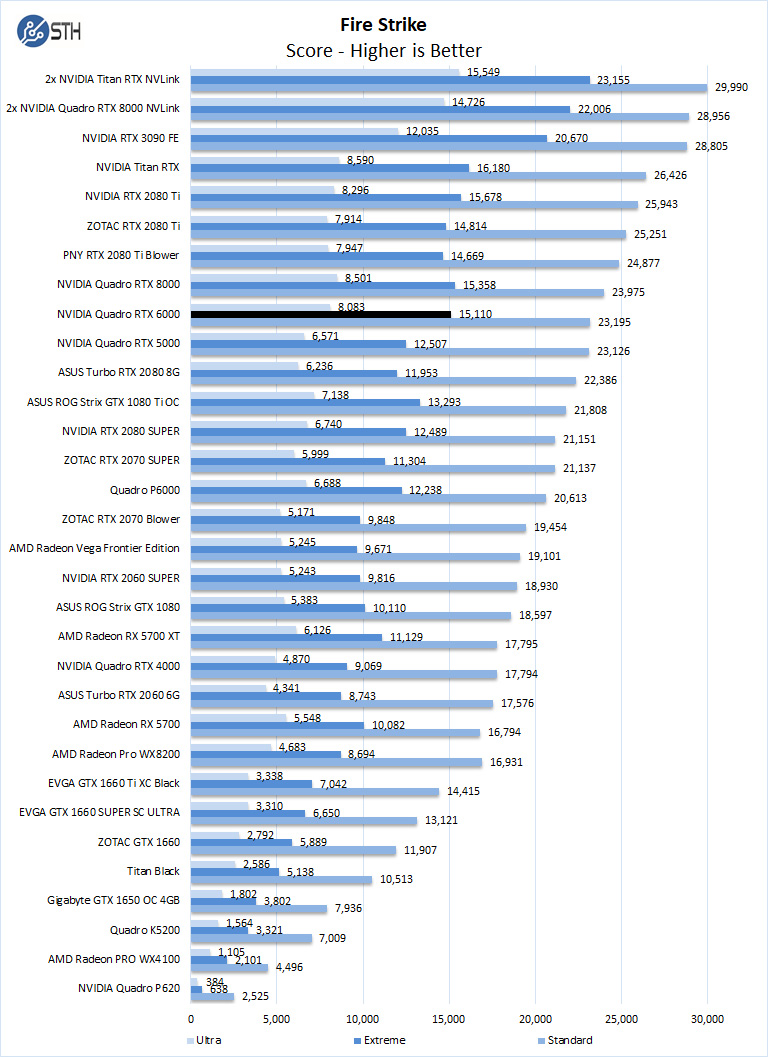
It’s clear to see that a single Quadro RTX 6000 offers up an incredible performance.
NVIDIA Quadro RTX 6000 Unigine Testing
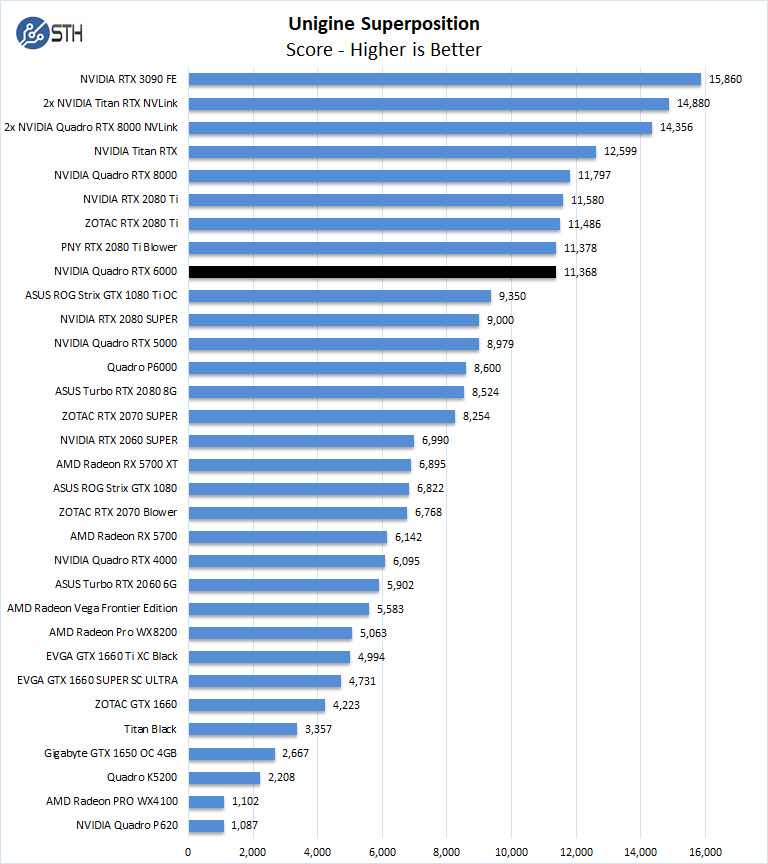
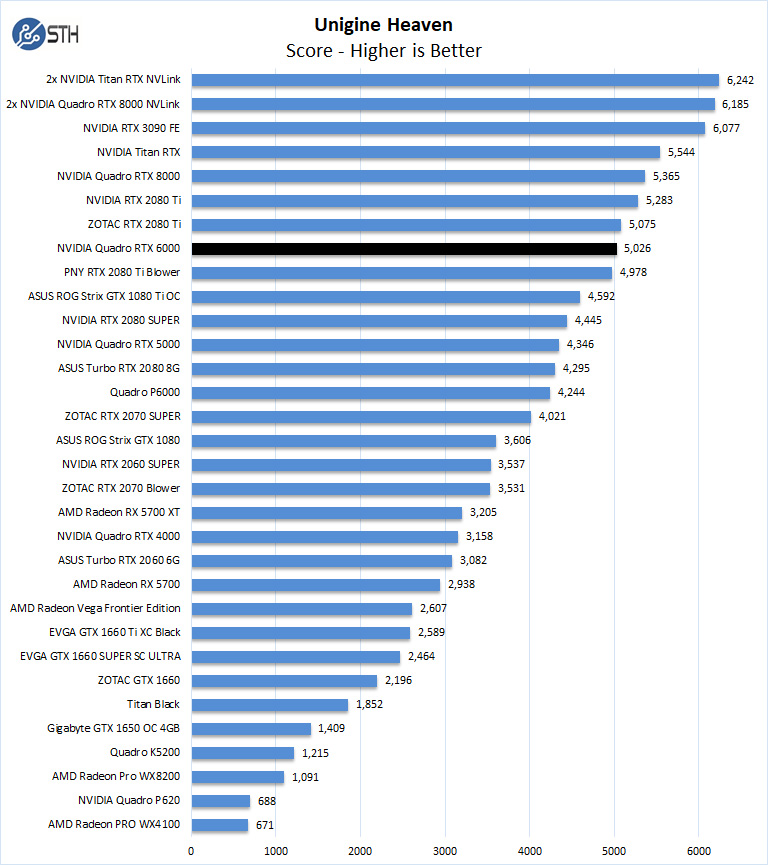
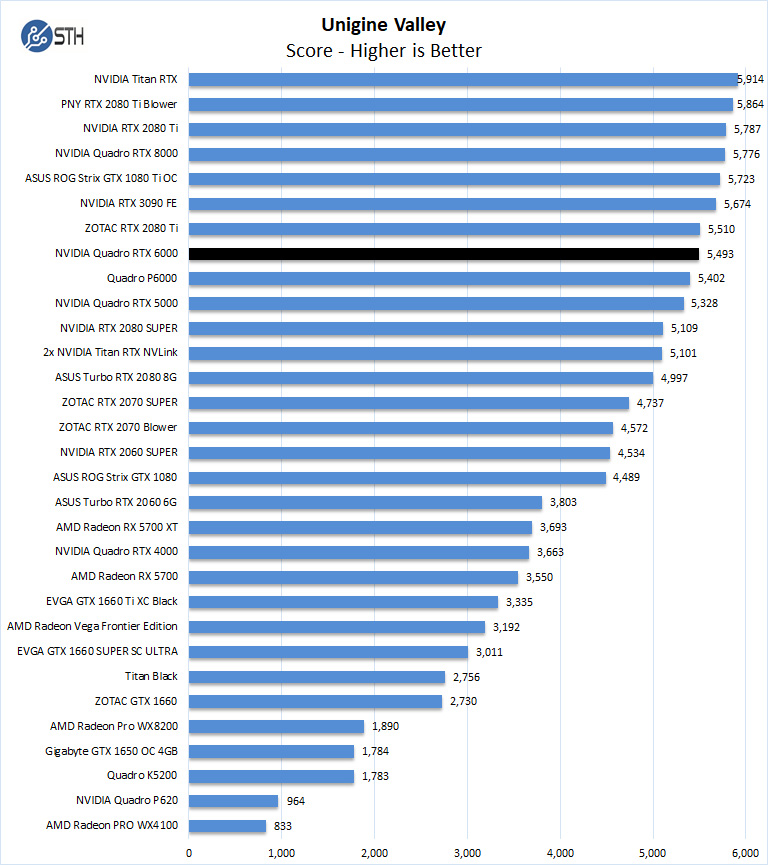
The Unigine benchmarks are older and often do not perform well with current graphics cards. We can see this in the Unigine Valley graph.
Next, we are going to look at the NVIDIA Quadro RTX 6000 with several Deep Learning benchmarks.


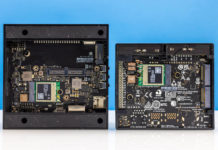

One of the big differences between the RTX Titan and the RTX 6000 is the ability to RDMA, aka, GPU-Direct DMA between machines.
I’d love to see that tested using Mellanox RDMA ConnextX 5 or higher cards on a 25, 40 or 100gb VPI or ethernet connection.
@Larry Barras
I’ve a dual 2080ti machine in a network that runs gig-E and QDR Infiniband. I have to explicitly tell NCCL to not look on the IB network for peers. So, I think you may be able to do RDMA with the gamer cards too.
No, none of the “consumer” range cards can do GPU-direct DMA, not even the Titan RTX. I’ve tried directly in the API and no dice, period. The RTX2080ti definitely will not, the API always returns an error code of “no permission/feature unsupported”.
@Larry
Ah, OK then. Good to know.
Hey guys!
Not sure what is up with that Octane benchmark guys but I think you should recheck the data you’ve gathered so far.
Given all the other reviewers and the official benchmark results page on Otoy’s page an RTX 2080ti performs about the same as the Titan RTX. The 3090 is typically about 2x as fast as the 2080ti in that benchmark – not quite the difference you’ve benchmarked.
Seems like something is super off there as the benchmark isn’t VRAM limited and so even a 2080 should be positioned a lot differently.
Are you sure you are running the latest benchmark? I can’t seem to reproduce these results on my end at al..